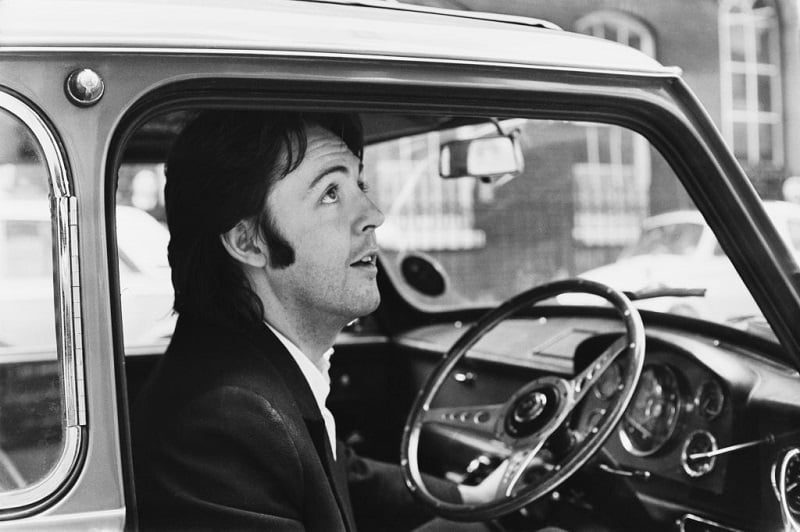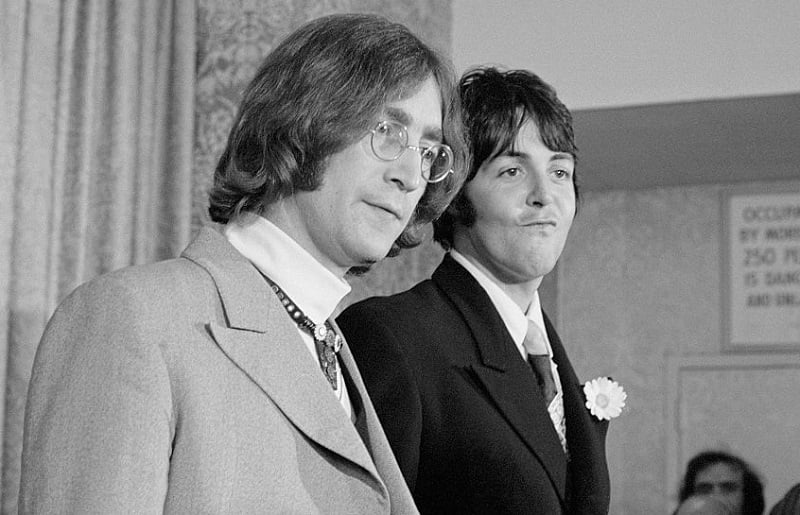The No. 1 Beatles Hit Paul McCartney Didn’t Want Released
When you watch the Let It Be documentary, a few things stand out. One is the famous ending, in which The Beatles give their last live performance on the roof of the Apple building. Also noteworthy is the energy Billy Preston brings after several uninspired rehearsals early in the film.
Clearly, the Fab Four (plus Yoko Ono) did not enjoy making the movie, especially in the beginning. The caught-on-camera argument between Paul McCartney and George Harrison led to George walking out on the band for a stretch in January 1969.
After George agreed to return, the band moved the recording dates (originally call the Get Back sessions) to Abbey Road. In the transition, they seemed to lose interest in a few of the songs they’d started.
One of those tracks was “The Long and Winding Road,” a ballad you can see Paul playing on piano at one point in Let It Be. While it ended up being the Beatles’ last No. 1 hit in America, Paul didn’t like what the song had become prior to its release.
Paul hated Phil Spector’s changes to ‘The Long and Winding Road’

The Beatles’ breakup was an ugly affair in many respects. And, oddly enough, the group’s final release (Let It Be) went out without the participation of several band members. For starters, John Lennon didn’t play at all on “I Me Mine,” the last track the rest of the group recorded.
But the band needed someone to go through all the tapes from the previous year to piece together the album. When John and manager Allen Klein chose Phil Spector for the job, it came with several downsides.
For one, Spector proved even more difficult to work with than anyone imagined. And Spector’s decision on how to improve “The Long and Winding Road” continues to live in infamy. (The lush orchestration and choir both came from Spector.)
Though Paul originally approved the record for release, he had second thoughts after re-listening to Spector’s work. He chafed at the idea of “female voices on a Beatles record,” demanded Spector tone down the orchestration/choir, and said the harp at the end should be removed. But none of that happened.
Paul’s request for changes came late, and the single went out as it was

During early 1970, it’s clear The Beatles were suffering from a communication breakdown. And it became part of the reason Paul couldn’t get any changes made to “The Long and Winding Road” prior to its release.
By the time Paul wrote (yes, wrote) to Klein and Spector demanding edits to the recording, the album’s pressing had already begun. So it was too late to remove the strings or otherwise tone down the soaring orchestral parts on the track.
According to author Peter Doggett, Klein had tried to contact Paul in early April ’70 about his concerns but couldn’t get through to him. (Paul had changed his phone number.) And Klein followed up with a telegram, only to receive a message saying he should refer to Paul’s earlier note on the recording.
All in all, it was a disaster, but nothing that could stop “The Long and Winding Road” from doing what 19 previous Beatles singles had done (i.e., top the Billboard charts). As for Spector’s arrangement, Paul must have come to tolerate it, as he used it in his solo performances for many years.
Also see: What George Harrison Called His Biggest Problem With Being in The Beatles


